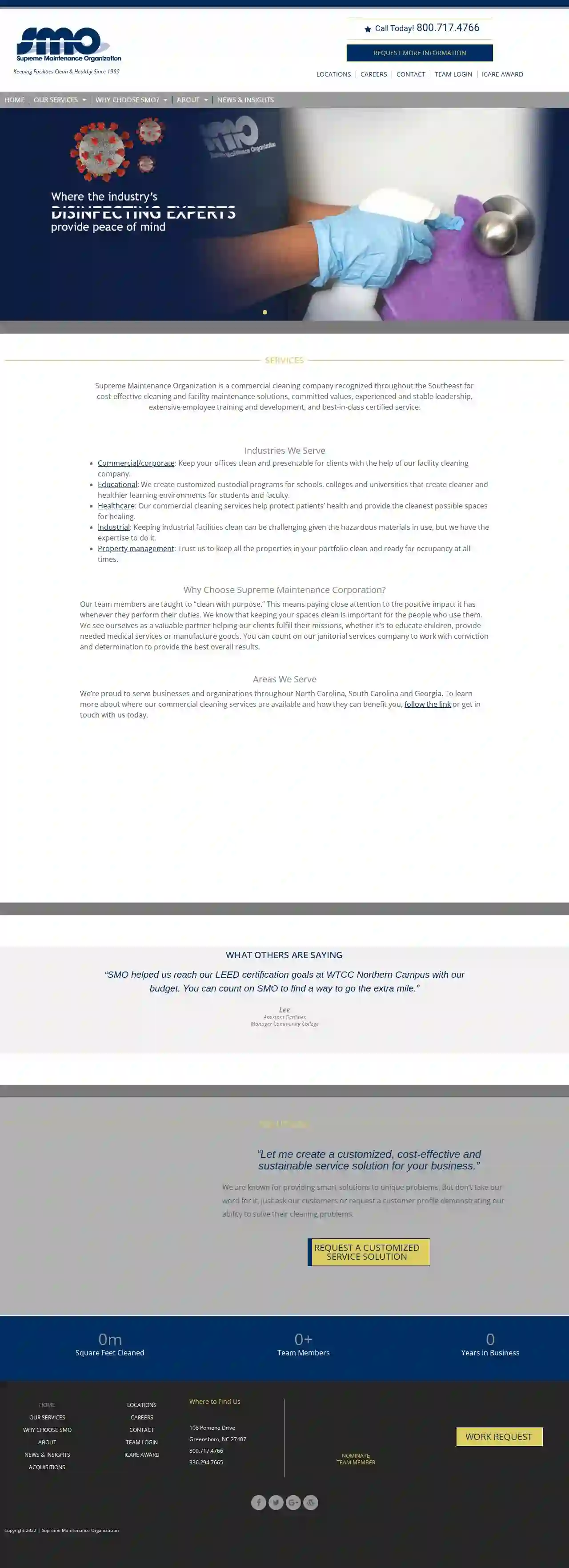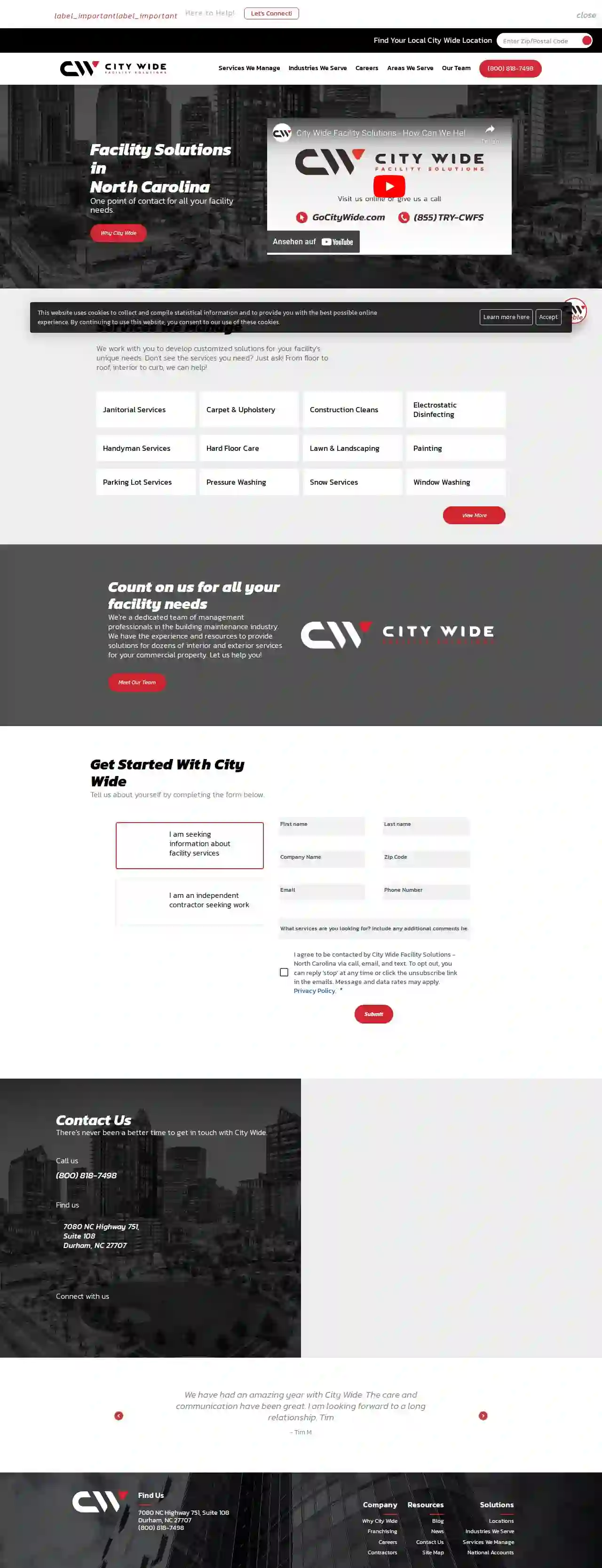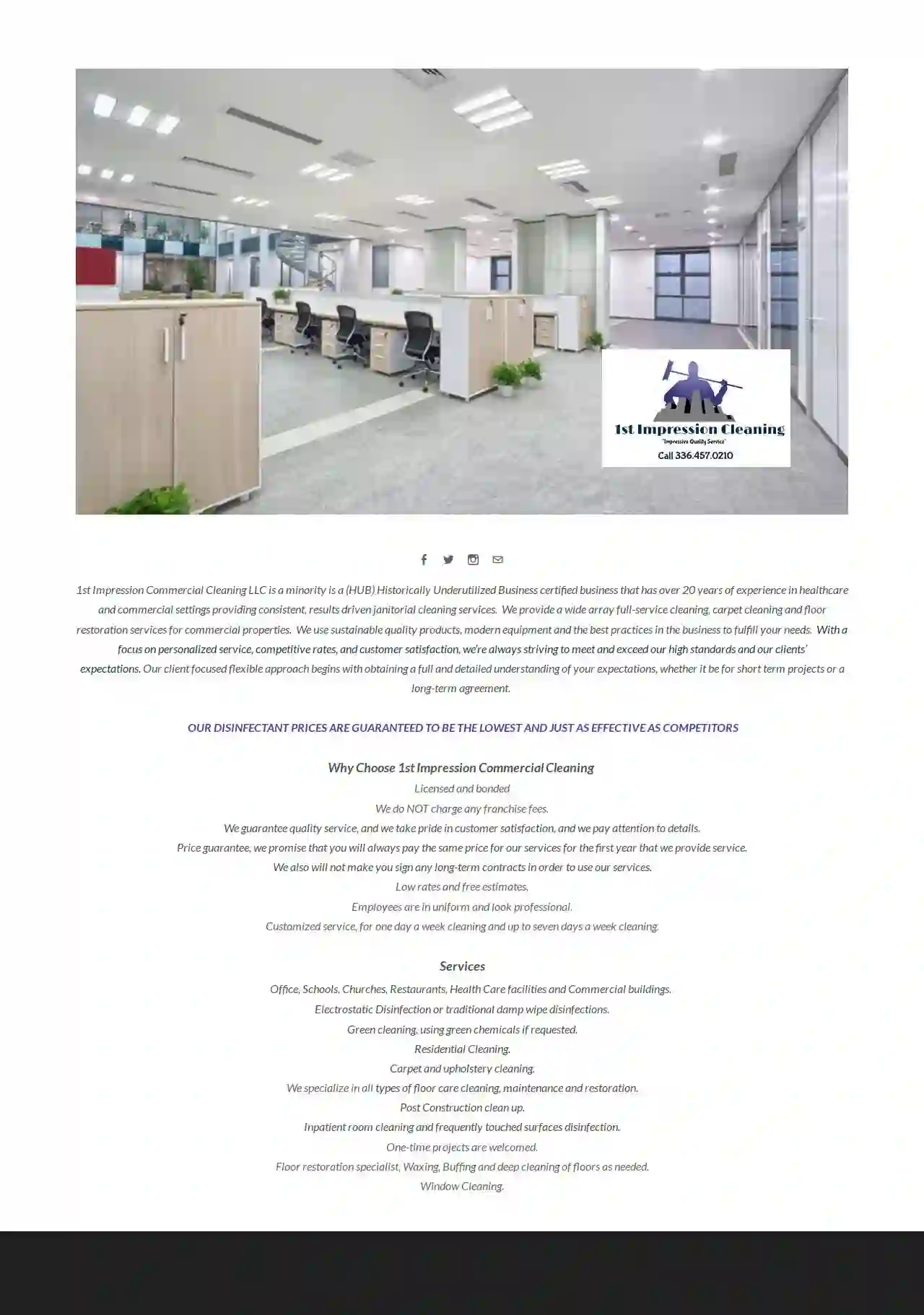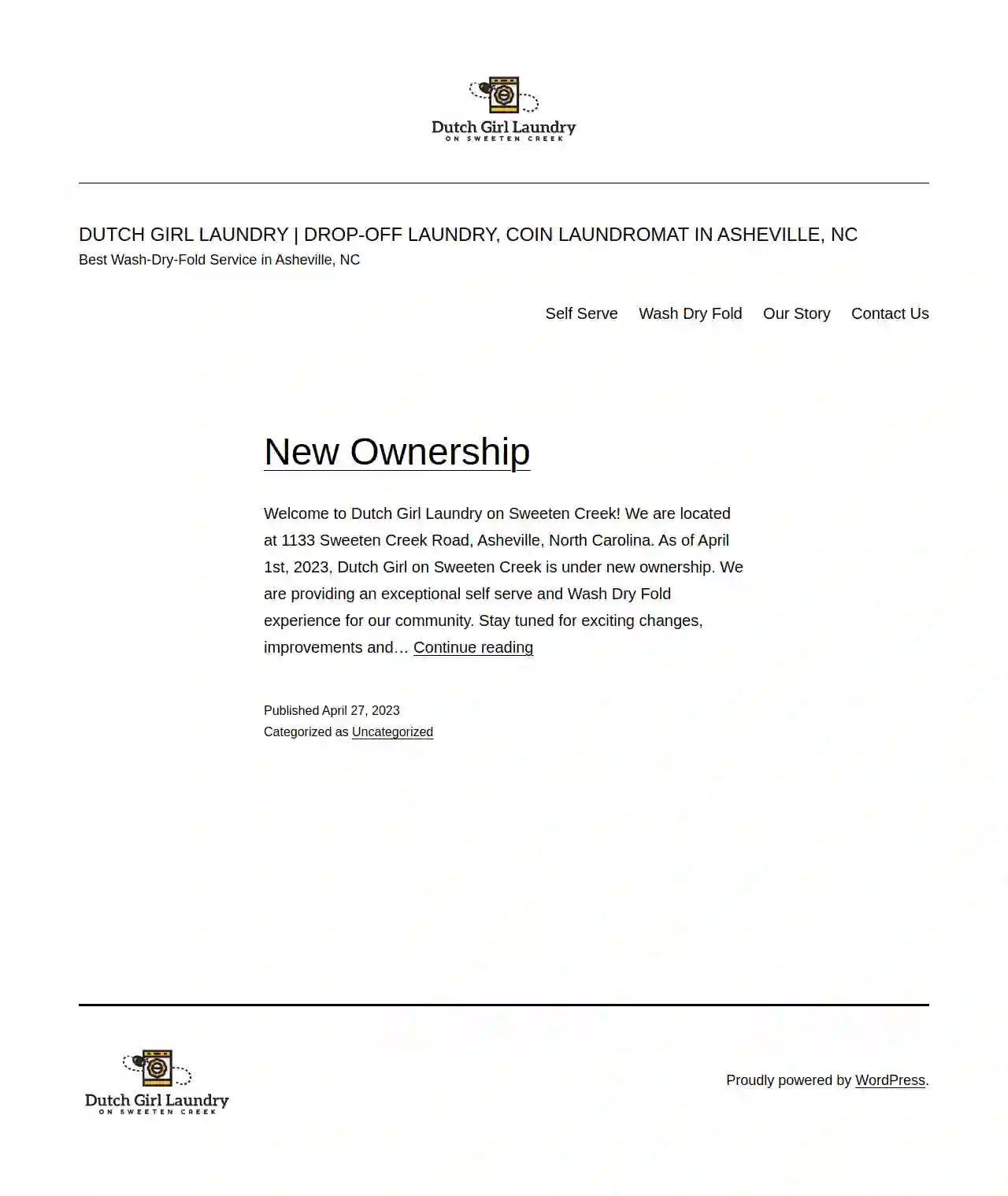Cleaning Services Selma
Best Cleaning in Selma
Get multiple Housekeeping Services quotes for your project today! Compare profiles, reviews, accreditations, portfolio, etc... and choose the best deal.

The Cleaning Authority - Greensboro
4.8224 reviewsGreensboro, US- Services
- Why Us?
- Gallery
Get Quote
Clean Sweep
High Point, USClean Sweep began its unique cleaning techniques in 1995. It has since remained a woman-owned company run and operated by Robin Barnes. Robin is proud to live and have her business be part of the High Point, North Carolina community for over 25 years. Robin grew up with a passion for cleaning and organizing. As she graduated, she knew cleaning was what she was meant to do and moved towards starting her own company. Robin loves seeing the smile on someone’s face when they walk into a thoroughly cleaned and organized space. Attention to detail, trustworthy and high standards describe both Robin and her company. Robin would love to meet you and tell you more about the Clean Sweep difference. Clean Sweep is environmentally aware and follows OSHA guidelines. Is bonded and certified, carries two million dollars in liability insurance at all times, while providing services to your property. We maintain Workers Compensation coverage during the time we’re providing services to you.
- Services
- Why Us?
- Our Team
- Testimonials
- Gallery
Get Quote
Eagle Clean Group
54 reviews123 Main St, Charlotte, 28277, USAt Eagle Clean Group, we pride ourselves on being a locally-owned and operated business that provides top-notch cleaning services to the residents of North Carolina. Our team of experienced professionals is dedicated to delivering exceptional results and ensuring that our customers are completely satisfied with our work. With years of experience in the industry, we have honed our skills and developed a reputation for being reliable, efficient, and trustworthy. Whether you need residential or commercial cleaning services, we have the expertise and equipment to get the job done right. Our mission is to provide our customers with a cleaner, healthier, and more comfortable living and working environment. We achieve this by using only the highest-quality cleaning products and state-of-the-art equipment, and by employing a team of highly trained and experienced cleaning professionals. At Eagle Clean Group, we are committed to excellence and strive to exceed our customers' expectations with every cleaning service we provide.
- Services
- Why Us?
- Accreditations
- Our Team
- Testimonials
Get Quote
Supreme Maintenance Organization
481 reviewsGreensboro, US- Services
- Why Us?
- Gallery
Get Quote
City Wide Facility Solutions - The Triad
4.212 reviewsGreensboro, US- Services
- Why Us?
- Gallery
Get Quote
1st Impression Commercial Cleaning
55 reviewsGreensboro, US- Services
- Why Us?
- Gallery
Get Quote
Polished Perch - Cleaning and Hot Tub Care
510 reviewsAsheville, US- Services
- Why Us?
Get Quote
Dutch Girl Laundry on Sweeten Creek
4.4160 reviewsAsheville, US- Services
- Why Us?
Get Quote
Executive Cleaning Services, LLC
55 reviewsCharlotte, US- Services
- Why Us?
Get Quote
NC Professional Cleaning LLC
53 reviewsDurham, US- Services
- Why Us?
Get Quote
Over 60,241+ Janitorial Services on our directory
Our cleaning contractors operate in Selma & surrounding areas!
CleaningMatch has curated and vetted Top Cleaning Businesses arround Selma. Find a top & reliable contractor today.
Frequently Asked Questions About Cleaning Services
- Frees up your time: Cleaning can be time-consuming, especially for larger properties or busy individuals. Hiring a cleaning service allows you to focus on other priorities, such as work, family, or leisure activities.
- Ensures a deeper clean: Professional cleaners are trained in effective cleaning techniques and have access to specialized equipment, resulting in a more thorough clean than you might achieve on your own.
- Reduces allergens and improves hygiene: Thorough cleaning removes dust, allergens, and germs, creating a healthier living environment, particularly for those with allergies or sensitivities.
- Reduces stress and improves well-being: Coming home to a clean and tidy home can reduce stress and promote a sense of calm and order.
- Check Fabric Care Label: Always check the upholstery care label for cleaning instructions specific to the fabric. Some fabrics may require professional cleaning.
- Vacuum: Vacuum the upholstery thoroughly to remove dust and loose debris. Use a brush attachment for crevices and seams.
- Spot Cleaning: For stains, blot with a clean cloth or sponge. Avoid rubbing, as it can spread the stain. Use a mild upholstery cleaner or a homemade solution of water and mild dish soap.
- Upholstery Cleaning Machine: If the fabric is suitable for wet cleaning, you can use an upholstery cleaning machine. Follow the machine's instructions carefully and test a small, hidden area first.
- Professional Upholstery Cleaning: For delicate fabrics, deep cleaning, or stubborn stains, consider hiring a professional upholstery cleaning service. They have specialized knowledge and equipment to clean upholstery safely and effectively.
- Weekly: Suitable for busy households with children or pets, ensuring a consistently clean and healthy environment.
- Bi-weekly: A good option for smaller households or those who maintain a relatively clean home.
- Monthly: May be sufficient for individuals or couples who live a minimalist lifestyle.
- Quarterly or Annually: Can be suitable for deep cleaning or seasonal cleaning tasks.
- Regular dusting: Dust frequently using microfiber cloths or a duster. Pay attention to surfaces that attract dust, such as shelves, electronics, and furniture.
- Vacuuming: Vacuum carpets and rugs regularly using a vacuum cleaner with a HEPA filter to trap dust mites and allergens.
- Air Purifier: Consider using an air purifier to remove dust particles and allergens from the air.
- Reduce Clutter: Clutter provides more surfaces for dust to settle. Declutter regularly to minimize dust traps.
- Window Treatments: Wash or vacuum window treatments, such as curtains or blinds, regularly to remove dust buildup.
- Bedding: Wash bedding, including sheets, pillowcases, and blankets, weekly in hot water to remove dust mites.
- Doormats: Place doormats at entrances to trap dirt and dust from shoes before they enter your home.
Are cleaning services worth it?
If you value these benefits and find the cost justifiable, cleaning services can be a worthwhile investment in your time and well-being.
How do I clean upholstery without damaging the fabric?
Always test any cleaning solution on a small, inconspicuous area first to avoid discoloration or damage.
How often should I have my house cleaned?
You can adjust the frequency based on your needs and budget. Some people opt for weekly cleaning for high-traffic areas like kitchens and bathrooms and bi-weekly cleaning for the rest of the house.
How do I prevent dust from accumulating in my home?
By implementing these preventive measures, you can significantly reduce dust accumulation and maintain a cleaner and healthier home.
Are cleaning services worth it?
- Frees up your time: Cleaning can be time-consuming, especially for larger properties or busy individuals. Hiring a cleaning service allows you to focus on other priorities, such as work, family, or leisure activities.
- Ensures a deeper clean: Professional cleaners are trained in effective cleaning techniques and have access to specialized equipment, resulting in a more thorough clean than you might achieve on your own.
- Reduces allergens and improves hygiene: Thorough cleaning removes dust, allergens, and germs, creating a healthier living environment, particularly for those with allergies or sensitivities.
- Reduces stress and improves well-being: Coming home to a clean and tidy home can reduce stress and promote a sense of calm and order.
If you value these benefits and find the cost justifiable, cleaning services can be a worthwhile investment in your time and well-being.
How do I clean upholstery without damaging the fabric?
- Check Fabric Care Label: Always check the upholstery care label for cleaning instructions specific to the fabric. Some fabrics may require professional cleaning.
- Vacuum: Vacuum the upholstery thoroughly to remove dust and loose debris. Use a brush attachment for crevices and seams.
- Spot Cleaning: For stains, blot with a clean cloth or sponge. Avoid rubbing, as it can spread the stain. Use a mild upholstery cleaner or a homemade solution of water and mild dish soap.
- Upholstery Cleaning Machine: If the fabric is suitable for wet cleaning, you can use an upholstery cleaning machine. Follow the machine's instructions carefully and test a small, hidden area first.
- Professional Upholstery Cleaning: For delicate fabrics, deep cleaning, or stubborn stains, consider hiring a professional upholstery cleaning service. They have specialized knowledge and equipment to clean upholstery safely and effectively.
Always test any cleaning solution on a small, inconspicuous area first to avoid discoloration or damage.
How often should I have my house cleaned?
- Weekly: Suitable for busy households with children or pets, ensuring a consistently clean and healthy environment.
- Bi-weekly: A good option for smaller households or those who maintain a relatively clean home.
- Monthly: May be sufficient for individuals or couples who live a minimalist lifestyle.
- Quarterly or Annually: Can be suitable for deep cleaning or seasonal cleaning tasks.
You can adjust the frequency based on your needs and budget. Some people opt for weekly cleaning for high-traffic areas like kitchens and bathrooms and bi-weekly cleaning for the rest of the house.
How do I prevent dust from accumulating in my home?
- Regular dusting: Dust frequently using microfiber cloths or a duster. Pay attention to surfaces that attract dust, such as shelves, electronics, and furniture.
- Vacuuming: Vacuum carpets and rugs regularly using a vacuum cleaner with a HEPA filter to trap dust mites and allergens.
- Air Purifier: Consider using an air purifier to remove dust particles and allergens from the air.
- Reduce Clutter: Clutter provides more surfaces for dust to settle. Declutter regularly to minimize dust traps.
- Window Treatments: Wash or vacuum window treatments, such as curtains or blinds, regularly to remove dust buildup.
- Bedding: Wash bedding, including sheets, pillowcases, and blankets, weekly in hot water to remove dust mites.
- Doormats: Place doormats at entrances to trap dirt and dust from shoes before they enter your home.
By implementing these preventive measures, you can significantly reduce dust accumulation and maintain a cleaner and healthier home.